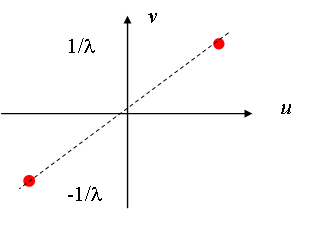
Image analysis in the frequency domain.
Classically, images are analyzed in the frequency domain using the 2D Fourier transform and its discretized and computer-optimized versions: the Discrete Fourier Transform (DFT) and most of all the Fast Fourier Transform (FFT). The programming domain and the data compression domain also resort to more adapted frequency representations such as the Discrete Cosine Transform (DCT) used for JPEG encoding.
We first consider a continuous bidimensional image f(x,y).
We note F(u,v) the 2D Fourier transform of image f(x,y):
D represents the region where the image f(x,y) is defined. The quantities u and v are real numbers representing the spatial frequencies of the bidimensional spectrum F.
Listed below are the most important properties of the 2D Fourier Transform: spatial symmetry, separability, hermitian symmetry, spatial translation and 2D convolution (respectively).
The separability property is of particular interest in the case of a linear filtering; f(x,y) then represents the impulse response of a filter. In this case, the 2D filtering operation breaks down into two 1D filtering operations, which considerably decreases the computation time. The last property (2D convolution) is also very important for filtering, and shows the compatibility of the Fourier transform with this operation. In other words, it means that the calculation of a linearly filtered image is obtained through a simple product in the spatial frequency domain. This calculation method is really advantageous when the Fourier transforms are computed with fast algorithms (FFTs).
We consider a separable image f(x,y), and its 2D Fourier transform F(u,v),
We can easily notice that the kernel of the 2D FT is also separable,
Therefore:
F1(u) and F2(v) are the 1D Fourier transforms of f1(x) and f2(y). F(u,v) (respectively).
Therefore, F(u,v) is separable. Below, we listed the 2D FTs of a few elementary functions: the delta function, the shifted delta function, the Gaussian aperture and the rectangular aperture (respectively).
We define rect(x,y) as a 2D rectangular function of unit parameters. By applying the 2D FT, we obtain:
and by using the separability of the kernel:
After integration, and using the Euler relations, we obtain:
This product defines the separable function sinc(u,v). This function presents a main peak and many secondary peaks delimited by a grating of horizontal and vertical lines corresponding to the zeros of the sine functions in the numerator of F(u,v). The maximum amplitude is equal to one and is obtained at frequency (0,0).
Before closing this section, we examine the case of the bidimensional sine function. We recall examples 1 and 2 from the previous chapter, and we define
 . We compute the 2D FT of S1,
. We compute the 2D FT of S1,
By replacing the sine function with the corresponding complex exponential functions, we find:
Regrouping the exponential functions of common argument in x and y yields the sum of two terms:
F(u,v) is therefore constituted of two delta functions located on the v axis, on both sides from the origin (u=0, v=0).

In the case of example 2, we have
 . The 2D Fourier transform of S2 is:
. The 2D Fourier transform of S2 is:
